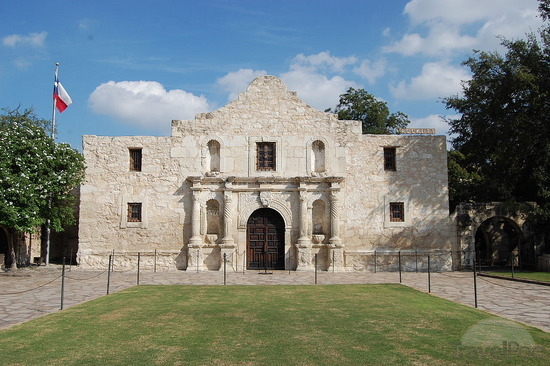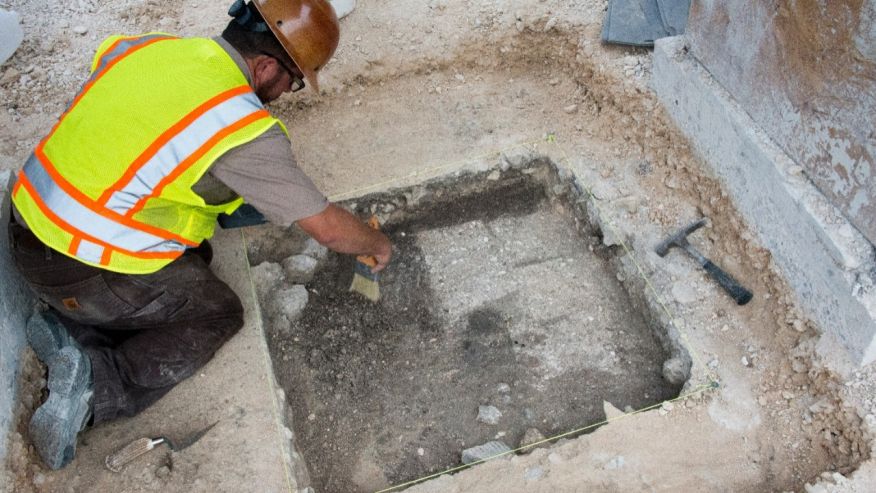
PHOTO: tripadvisor.com
It was December of 1835. Texas was fighting a bloody battle for independence from Mexico. It was at an old Franciscan mission called the Alamo that a small band of Texan volunteer soldiers took up winter shelter. A few months later, on February 23, 1836, a Mexican force a thousand strong led by General Santa Anna lay siege to the fort.
In a stand strangely reminiscent of historical battles like Thermopylae and the Last Stand of the Swiss Guard in Rome, the 200 volunteers held their ground for thirteen days until they were eventually overrun. It was a symbol of heroism, a stand against oppression, a fight for independence that has been essential to the American narrative since July 4th, 1776. The Texans would, eventually, win their independence from Mexico the year after the fight for the Alamo, and the Alamo would become a national landmark in the years to come.
The Alamo itself is almost 300 years old now. It was first established as a Franciscan mission in 1744. Archaeologists have been digging at the site sporadically since the 70s, but not much has turned up in the way of exciting finds.
The Alamo, Re-imagined
Recently, the Texan state government launched a new project for the historical site, called “Re-imagine the Alamo“. They believe the site has a big, important story to tell, one that has been misunderstood by the general public, and they’re out to change that by developing what they call “a new master plan” for the Alamo and its surrounding land and archaeological sites.
On July 20th of this year, archaeologists began a three-to-four-week dig covering three different locations on the Alamo Plaza. They were hoping they’d find some new information about the site that will help them see it in a different light.
Well, they’ve found something.

PHOTO: Fox News
In a press conference held last Monday, Nesta Anderson, the site’s lead investigator and senior archaeologist said: “Last week we very excited to discover we found the remnants of an old adobe brick wall. In the ground, we can see clearly, bricks stacked next to each other, they are made of adobe, so they are very fragile.”
It doesn’t sound like anything particularly important at first, but it actually is. Adobe is a material that, historically, the Spanish used to create other contemporary Spanish Colonial buildings in the same vicinity.
Archaeologists aren’t sure just yet what wall these bricks were a part of. It’s unclear whether it was originally an interior or exterior wall, but they’re focused on finding that out. They’re turning to historical archives and to digging around the site. They know what time period they’re digging in, since the architecture matches the Spanish Colonial period, so if they dig around and find something else that dates to that period, they might be able to piece together the story of the Alamo from that part of history.
They’re speculating that the bricks could be part of the Alamo’s west wall. However, another theory has been thrown about that it might be part of a building that was originally used by Native Americans living outside the Alamo.
They’re having a really hard time nailing down anything just yet.
“We’re not talking about solid bricks, just to be clear, this is almost a soil stain, if you will. It’s a difference in color in the soil – these bricks are made of mud, so they are very sensitive to weather.”
They’re counting on further research to help them clarify what the wall was used for, as it could provide important insight into the Alamo’s history. Historians really don’t know a lot about the building from an archaeological perspective. They just have written records, so they’re hoping that further digging will reveal more about the Spanish Colonial period of the mission’s story.
Digging at the site will continue for a few more weeks under the leadership of archaeologist Nesta Anderson.

